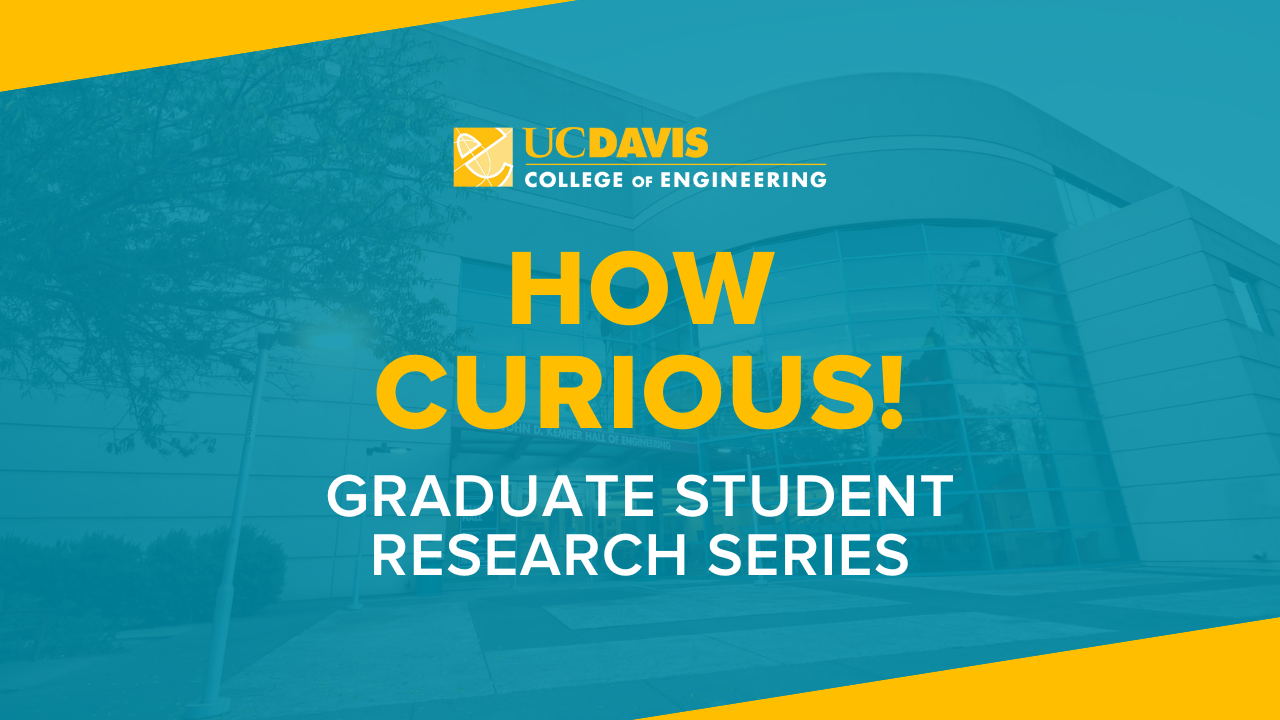
Event Date
How Curious! offers graduate students in master's and Ph.D. programs in the College of Engineering an opportunity to present their research findings and engage in scholarly discussions with their peers and faculty members. The goal is to foster collaboration, encourage intellectual exchange and support the professional development of our graduate student community.
Presenters
Ece Deniz, Materials Science and Engineering
Presenting: Functional Characterization of Photovoltaic Materials through Advanced Microscopy
Hybrid organic-inorganic perovskites (HOIPs) are promising for optoelectronics due to their adjustable bandgap, affordability, and easy fabrication. However, they are vulnerable to environmental factors such as humidity, temperature, and light. Investigating their behavior under these conditions require nanoscale characterization to capture the intricate details of how they respond in real time. Using scanning probe microscopy techniques, such as kelvin probe force microscopy (KPFM) and conductive atomic force microscopy (cAFM), we analyzed the electrical response of CsFA-based HOIPs at the nanoscale. Our study focused on how different compositions affect ion migration and humidity responses. We found that humidity changes the surface voltage distribution over time, highlighting the complex interaction between ions and water, and the role of grain boundaries. Understanding the precise mechanism of interaction of water with perovskite surface paves the way towards improving the performance and stability of HOIPs in solar technology applications.
Bio: Ece is a fifth year Ph.D. student in the Department of Materials Science and Engineering, advised by Professor Marina Leite. Her research focuses on nanoscale characterization of perovskite materials for solar cell applications. Ece is broadly interested in solar energy materials and scanning probe techniques.
Patrick Cunningham, Civil and Environmental Engineering
Presenting: Using material flow analysis as a tool to evaluate the supply of supplemental cementitious materials for more sustainable concrete
Portland cement and concrete production together account for ~8% of anthropogenic greenhouse gas (GHG) emissions. Substituting Portland cement, the most GHG intensive component of concrete, with supplemental cementitious materials (SCM) continues to be a key strategy to reducing these negative GHG impacts. However, the supply of many conventional SCMs (coal fly ash from coal combustion and ground blast furnace slag from pig iron production) is decreasing as high GHG-emitting industries work to reduce their own GHG impacts. To meet current and future demands for concrete, alternative SCMs that meet performance, supply, and cost constraints need to be identified. In this presentation, material flow analysis (MFA) is applied SCM generation systems to understand the material flow and supply of industrial byproduct SCMs. The implications of this analysis for SCM development and selection are discussed.
Bio: Patrick is a Ph.D. candidate in the Department of Civil and Environmental Engineering in the lab of Professor Sabbie Miller and a current NCST dissertation grantee. He investigates the sustainability of building materials with a specific focus on combining experimental material evaluation with industrial ecology techniques to evaluate alternative, regional supplemental cementitious materials with the goal of decreasing the environmental impacts of concretes. Links to Patrick's publications can be found at: https://www.PatrickRCunningham.com/
M.A. Mort, Electrical and Computer Engineering
Presenting: Modular until it’s Not – Imaging Fast, Hard X-Rays at NIF
The proposed multi-frame gated x-ray imager (MGXI) is a fast, hard x-ray imaging diagnostic for use in ICF and HED experiments at the National Ignition Facility (NIF), such as Compton radiography and hot spot imaging. MGXI has goals to image 10-100 keV x-rays with 100-1000 ps temporal resolution in 2-8 frames and >5% DQE. Modularity of the versatile testbed for initial MGXI component experimentation starts with testing microchannel plates (MCPs) under vacuum with an electron gun and a simple photodiode (PD) array. Simultaneously, MCPs will be modeled in Computer Simulation Technology (CST) to determine the effects an applied magnetic field has on the electron trajectories.
Bio: M.A. is a 5th year PhD student in the Electrical and Computer Engineering Department, advised by Dr. Charles Hunt. Their research focuses on developing a new x-ray diagnostic for looking at high energy x-rays emitted during nuclear fusion events at the National Ignition Facility. M.A. is also broadly interested in vacuum & semiconductor technology, nuclear fusion, and the future of clean energy and energy efficiency. M.A. has won multiple awards for poster presentations at symposiums at the Lawrence Livermore National Laboratory and at American Vacuum Society sponsored conferences.
